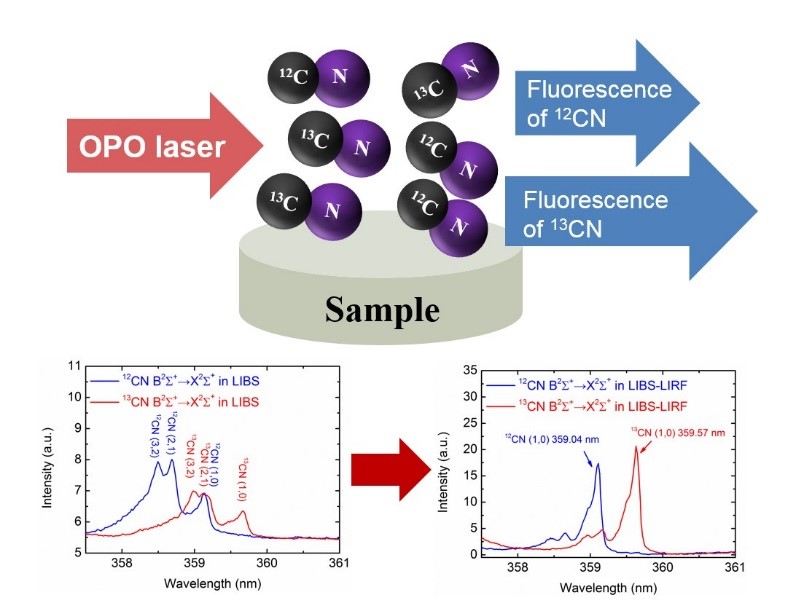Isotopes are variants of chemical elements and are widely applied in scientific research and industry. Isotopes also play important roles in agriculture, immunology, molecular biology, genetic engineering research, and basic nuclear medicine. Traditional methods for detecting isotopes include mass spectrometry and neutron activation analysis, while these methods have drawbacks in the industrial application, such as complex sample pretreatments and vacuum conditions. Laser-induced breakdown spectroscopy (LIBS), as a spectrometry technique for the material components analysis, has the advantages of rapid, in situ, real-time, remote analysis and simple sample preparation and can be applied in the isotopic detection. Atomic emission, generally used in conventional LIBS, still has the drawbacks of spectral interference. To overcome these flaws, researchers have been focusing on molecular emission in recent years, but the weak spectra of molecular emission has made the quantitative accuracy and sensitivity deterioration.
The research group of Wuhan National Laboratory for Optoelectronics introduced laser-induced radical fluorescence combined with laser induced breakdown spectroscopy for isotopic detection. The molecular spectra of BO and CN were used as examples to build calibrations for isotopes 11B, 10B, 12C, and 13C, respectively. LIBS-LIRF was applied to achieve the spectral enhancement and spectral interference elimination, and improve the accuracy and sensitivity of isotopic determination. This work showed that LIBS-LIRF was a simple and efficient method for isotopic determination.
This work has been published in Optics Express: Z. H. Zhu, J. M. Li, Z. Q. Hao, S. S. Tang, Y. Tang, L. B. Guo*, X. Y. Li, X. Y. Zeng, and Y. F. Lu, "Isotopic determination with molecular emission using laser-induced breakdown spectroscopy and laser-induced radical fluorescence," Opt. Express 27, 470-482 (2019).
The research was financially supported by National Natural Science Foundation of China (No.51429501 and 61575073) and China Postdoctoral Science Foundation (No.2017M622415).

Fig.1. The principle and spectra of carbon isotopic detection by LIBS-LIRF